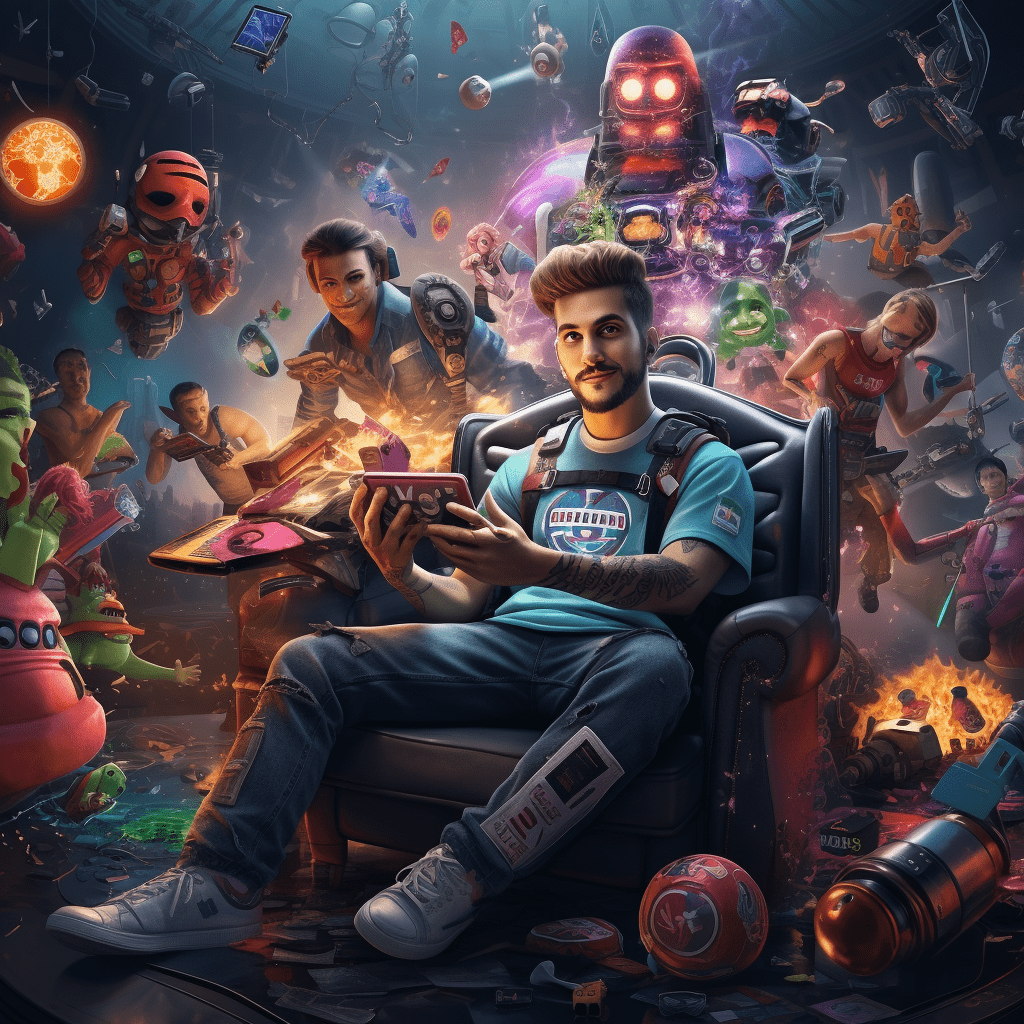Introduction
Gaming brand collaborations have become increasingly prevalent in the industry, leading to numerous benefits for both the brands involved and the gaming community. These collaborations refer to partnerships between gaming companies and other brands, such as fashion, entertainment, or technology companies, to create unique and innovative gaming experiences. The importance of collaborations in the gaming industry cannot be overstated, as they allow for the exchange of ideas, resources, and expertise, ultimately resulting in the development of groundbreaking games and products. This article will explore the historical overview, benefits, successful collaborations, challenges, strategies, impact on the gaming community, future trends, and possibilities of gaming brand collaborations.
Historical Overview of Gaming Brand Collaborations
Early examples of collaborations in the gaming industry can be traced back to the 1980s, when video game companies started partnering with movie studios to create games based on popular films. One notable example is the collaboration between Atari and Lucasfilm for the release of the game “Star Wars” in 1983. This marked the beginning of a trend that would continue to evolve and grow over time.
As technology advanced, collaborations in the gaming industry became more sophisticated and diverse. Companies started partnering with musicians, athletes, and fashion brands to create unique gaming experiences that appealed to a wider audience. The growth of online gaming and social media platforms further facilitated collaborations, allowing for greater visibility and reach.
The impact of technological advancements on collaborations cannot be ignored. The rise of virtual reality (VR) and augmented reality (AR) technologies has opened up new possibilities for immersive gaming experiences. Additionally, the advent of streaming platforms and online communities has created opportunities for collaborations between gaming companies and content creators, resulting in the development of new gaming content and experiences.
Benefits of Gaming Brand Collaborations
1. Increased brand visibility and exposure: Collaborations allow gaming companies to tap into the existing fan base of the partner brand, increasing their reach and visibility. This exposure can lead to increased sales and brand recognition.
2. Access to new markets and target audiences: Collaborations with non-gaming brands can help gaming companies expand their reach beyond traditional gaming demographics. By partnering with brands that have a strong presence in other industries, gaming companies can attract new audiences and enter new markets.
3. Enhanced product quality and innovation: Collaborations bring together the expertise and resources of multiple brands, resulting in the development of high-quality and innovative products. By combining their strengths, gaming companies and partner brands can create unique gaming experiences that push the boundaries of technology and creativity.
4. Financial advantages and revenue growth: Collaborations can be financially beneficial for both gaming companies and partner brands. By sharing resources and marketing efforts, both parties can reduce costs and increase revenue. Additionally, collaborations can lead to the development of new revenue streams, such as merchandise sales or licensing agreements.

Successful Gaming Brand Collaborations
1. Collaboration between Nintendo and Ubisoft for Mario + Rabbids Kingdom Battle: This collaboration brought together two iconic gaming franchises, Mario and Rabbids, to create a turn-based strategy game. The partnership resulted in a critically acclaimed game that appealed to both Nintendo and Ubisoft fans.
2. Partnership between Sony and Kojima Productions for Death Stranding: This collaboration between Sony and renowned game developer Hideo Kojima resulted in the creation of a highly anticipated and innovative game. The partnership allowed Kojima Productions to leverage Sony’s resources and expertise, resulting in a game that pushed the boundaries of storytelling and gameplay.
3. Collaboration between Epic Games and Marvel for Fortnite x Avengers crossover event: This collaboration brought together the world of Fortnite and the Marvel Universe, allowing players to experience an epic crossover event within the game. The collaboration generated significant buzz and excitement among gamers, resulting in increased player engagement and revenue for both Epic Games and Marvel.
4. Joint venture between Microsoft and Mojang for Minecraft: Education Edition: This collaboration aimed to bring the educational benefits of Minecraft to classrooms around the world. By partnering with Microsoft, Mojang was able to leverage their expertise in educational technology and reach a wider audience of educators and students.
Challenges and Risks of Gaming Brand Collaborations
While gaming brand collaborations offer numerous benefits, they also come with their fair share of challenges and risks. Potential conflicts in creative direction and decision-making can arise when two brands with different visions and goals come together. This can lead to delays in the development process and compromises in the final product.
Brand dilution and loss of identity are also risks associated with collaborations. When gaming companies partner with non-gaming brands, there is a possibility that the gaming brand’s identity may be overshadowed or diluted by the partner brand’s image. This can result in a loss of authenticity and credibility among the gaming community.
Negative impact on consumer perception is another challenge that gaming brand collaborations may face. If the collaboration is not well-received by the gaming community, it can lead to a decline in sales and damage to the reputation of both brands involved.
Strategies for Successful Gaming Brand Collaborations
To ensure the success of gaming brand collaborations, certain strategies can be implemented:
1. Clear communication and goal alignment: It is essential for both parties to have open and transparent communication throughout the collaboration process. Clear goals and expectations should be established from the beginning to avoid any misunderstandings or conflicts.
2. Establishing mutual trust and respect: Building a strong relationship based on trust and respect is crucial for the success of a collaboration. Both parties should value each other’s expertise and contributions, and work together as equal partners.
3. Leveraging complementary strengths and expertise: Collaborations should be based on the idea of leveraging each brand’s unique strengths and expertise. By combining their resources and knowledge, both parties can create a product or experience that is greater than the sum of its parts.
4. Continuous evaluation and adaptation: Collaboration is an ongoing process that requires continuous evaluation and adaptation. Both parties should be open to feedback and willing to make necessary adjustments to ensure the success of the collaboration.
Impact of Gaming Brand Collaborations on the Gaming Community
Gaming brand collaborations have a significant impact on the gaming community. They generate excitement and engagement among gamers, as they offer unique and innovative gaming experiences. Collaborations also expand gaming experiences and content, allowing players to explore new worlds and narratives. Additionally, collaborations foster a sense of community and collaboration among players, as they come together to experience and discuss the collaborative content.
Future Trends and Possibilities in Gaming Brand Collaborations
The future of gaming brand collaborations holds exciting possibilities. Virtual reality (VR) collaborations have the potential to create immersive gaming experiences that blur the lines between the virtual and real world. Cross-platform collaborations can bring together players from different gaming platforms, allowing for a more inclusive and connected gaming community. Collaborations with non-gaming brands can also continue to expand, as gaming becomes more integrated into various industries and sectors.
Conclusion
Gaming brand collaborations have become an integral part of the gaming industry, offering numerous benefits for both the brands involved and the gaming community. They increase brand visibility, access new markets, enhance product quality, and contribute to financial growth. However, collaborations also come with challenges and risks, such as conflicts in creative direction and brand dilution. By implementing strategies for successful collaborations and considering the impact on the gaming community, gaming companies can continue to innovate and create groundbreaking gaming experiences. The future of gaming brand collaborations holds endless possibilities, and it is crucial for the industry to embrace and pursue more innovative and impactful collaborations.







